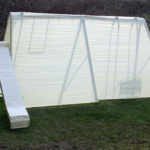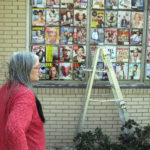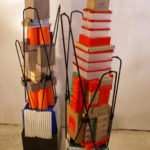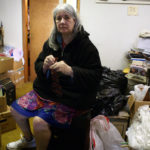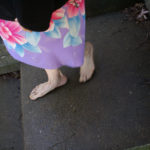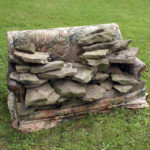
Why does skin wrinkle and lose elasticity? Because our bodies’ stem cells produce less collagen as we age. Stem cells are also responsible for maintaining the bone mass of our skeletons. As the volume of bone decreases, we become more prone to broken bones. Stem cells are not just present in unborn children. They are present in adults. Learning how to stimulate adult stem cells without triggering rampant cell growth (e.g. cancer) could herald the dawn of an age where people live longer and healthier lives.
“Losing our health is the single biggest concern we all face.” So says Dr. Jill Helms, Professor of Surgery at Stanford University. “Our immune system and biology evolved for us to live till about fifty.” But, she argues, it doesn’t have to be that way. Within the next ten years, she predicts we’ll find people in their eighties and nineties living vigorous, active lives.
And who can argue with that? As many of us unfortunately know, health issues will derail whatever plans we’ve made for work, hobbies, or family fun. It’s not just the time-suck of doctors’ visits or poring over the fine print in the insurance policy. It’s the worry that cocktails of poisonous chemicals and repeated zaps of radiation might not help. But what if your body could heal itself?
Longer and Healthier Lives
What if medicine could mobilize the body’s own healing mechanisms? Breakthroughs at the California Institute for Regenerative Medicine have already figured out how to re-grow bones. This is not science fiction. More breakthroughs are just around the corner. “The key thing to understand,” Helms says, “is that when a cell divides, its DNA must be protected by telomeres on the tips.”
Regenerating Damaged Organs
The good news is that there’s an enzyme called telomerase that both protects and, to some extent, “regrows” telomeres. The research that won microbiologists Blackburn and Greider a Nobel Prize for Medicine found that telomerase can rebuild shortened telomere-caps. If telomeres stay healthy, that will delay aging. Living to a hundred will no longer be the exception.
“A better biology can heal humanity,” Helms says. But telomerase by itself won’t do the job. That’s because telomerase is also closely linked to rampant cell growth, meaning cancer. The key to controlling the benefits and avoiding the problems of telomerase lies in continued funding for stem cell research.
Stem cell research has been controversial because the research uses cells from human embryos. Federal funding has been cut off, due to lobbying by right-to-life groups. In 2003 the California legislature voted to fund the California Institute for Regenerative Medicine. The state funding brought $279,005,859 to Stanford and put them in a worldwide leadership position. It also freed researchers from dependence on federal funding.
Two Kinds of Stem Cells
When embryonic stem cells divide, the two new cells are exact copies of the original. They’re clones. Embryonic stem cells can make any cell that is present in the adult body. Think about that. Any cell in the human body.
But not all stem cells are embryonic. Stem cells change character very quickly. Soon after conception, stem cells begin to differentiate.

At six weeks in utero, a baby is, in effect, already composed of adult stem cells. Brain cells have become a brain. Kidney cells are on their way to becoming kidneys. Blood cells have become blood.
As we age, our stem cells continue to maintain tissues in the hair, gut, and blood. These parts of our body are maintained because stem cells are reproducing them. Although we have adult stem cells, their biology restricts what they can do. That is because stem cells’ potency changes over time. When adult stem cells start to age, there are changes. We have less hair, or our hair turns gray.
The good news is that we still have stem cells, even though they may be damaged. The key thing is to get them to be robust again. Ironically, this is starting to sound a lot like cancer: cells that run rampant and whose growth we don’t know how to stop. And, that is indeed the problem.
Stem cells and cancer cells are very nearly identical. If we can understand what makes stem cells regenerate, then we can regenerate lost tissue. But understanding the growth mechanisms of stem cells may also put us closer to a cure for cancer. Cancer cells are immortal; they keep on growing, no matter what.
WNT and Stem Cells
What would it take to regenerate our damaged organ parts? Could we do it with stem cells? How is it that some animals can regenerate whole organs, and we can’t? What makes regeneration possible?
WNT controls the on-off switch that stimulates stem cells. Here’s what Genetics Home Reference has to say about WNT. “Researchers have identified 19 genes in the WNT gene family. These genes provide instructions for making similar proteins that participate in chemical signaling pathways in the body. Some WNT proteins are specific to certain cells and tissues.”
WNT signaling is frequent in young stem cells but decreases as we age. When WNT is over-active, it causes cancer.
Telomeres + Telomerase + WNT = A Ripe Old Age
Jill Helms says that WNT is the protein that also regulates telemetry (meaning the interaction between the telomeres and telomerase). WNT activates stem cells, and understanding how this mechanism works on the molecular level is the key to understanding tissue regeneration. Because WNT is a recombinant protein (meaning its DNA can replicate itself), WNT can be delivered outside the body.
Are you with me here? I thought not. Let’s back away from the jargon and look at the potential.
The folks at Stanford think that it might be possible to add WNT to specific sites in an older person: a stroke-damaged brain or broken bones, for instance. Let WNT activate the damaged stem cells. Regrow grandma’s hip socket. Helms pointed out that this also has the potential to mend bones that are now held together with screws and titanium plates.
On the surface, this sounded to me like a perfect thing to regenerate motor neurons, but Helms said that MND (motor neuron disease) is in a “nonspecific area.” WNT would only work for a specific area, and that’s because of its powerful stem-cell activation capabilities. (Motor Neuron Disease is the same thing as ALS, or Lou Gehrig’s disease.)
Folks at Stanford have had a great deal of success regenerating bone. They harvest the bone marrow from a damaged site, and they put that in a Petri dish and add WNT. Then they return the marrow to site where they want the bone to regenerate. It makes a lot more bone, and the bone is the right shape for where it’s located. A hip socket, for instance, regenerates into a proper hip socket.
Among the groups working in California is the California Center for Regenerative Medicine, ANKASA—a company formed to bring these discoveries to humans. Right now they are only focusing their research on diseases that have no cure. Drug companies typically need 20 months to do the safety and efficacy tests necessary for FDA approval, but ANKASA is trying to fast-track the results of their research so that it will benefit those who need it now.
If you’re interested in learning more about the details of this research, here’s a link to the University of Utah’s Health Sciences Center. It will give you some insight into the discoveries that continue to unfold. But, don’t rush out and buy the telomerase-enhancing supplements sold on YouTube. Stomach acid will destroy the enzyme before it can be absorbed into your circulatory system and delivered to the telomeres on the tips of your DNA.
So what do you think? Would you like to have your hip socket grow back instead of having a hip replacement? What if this led to a cure for cancer?


